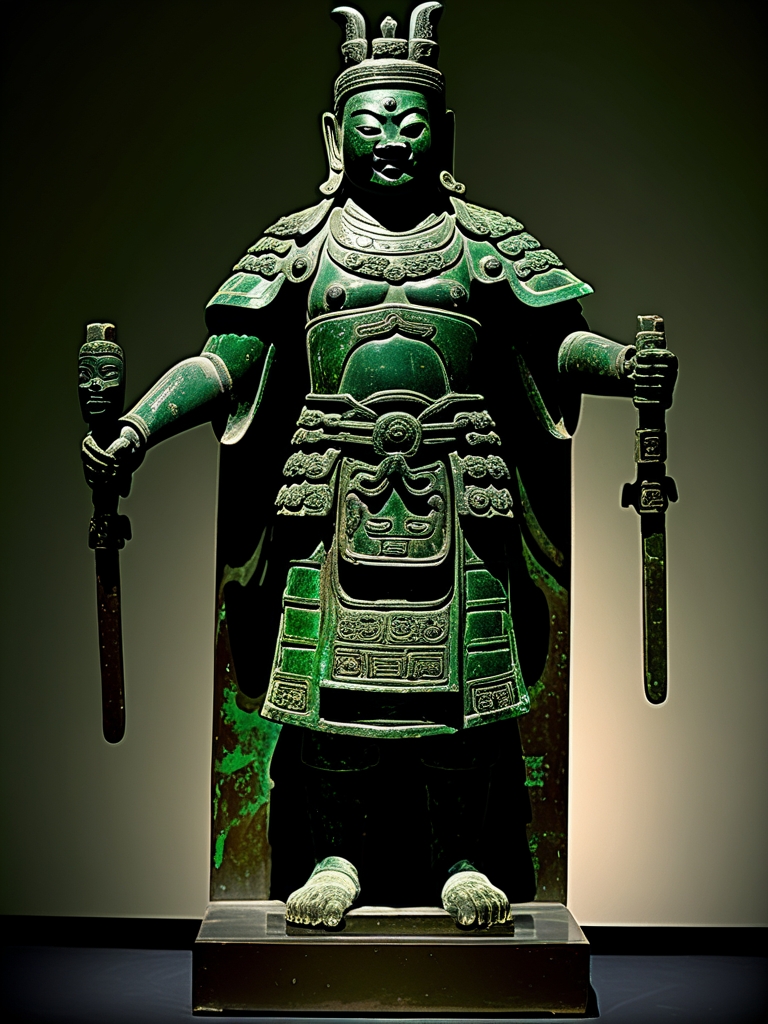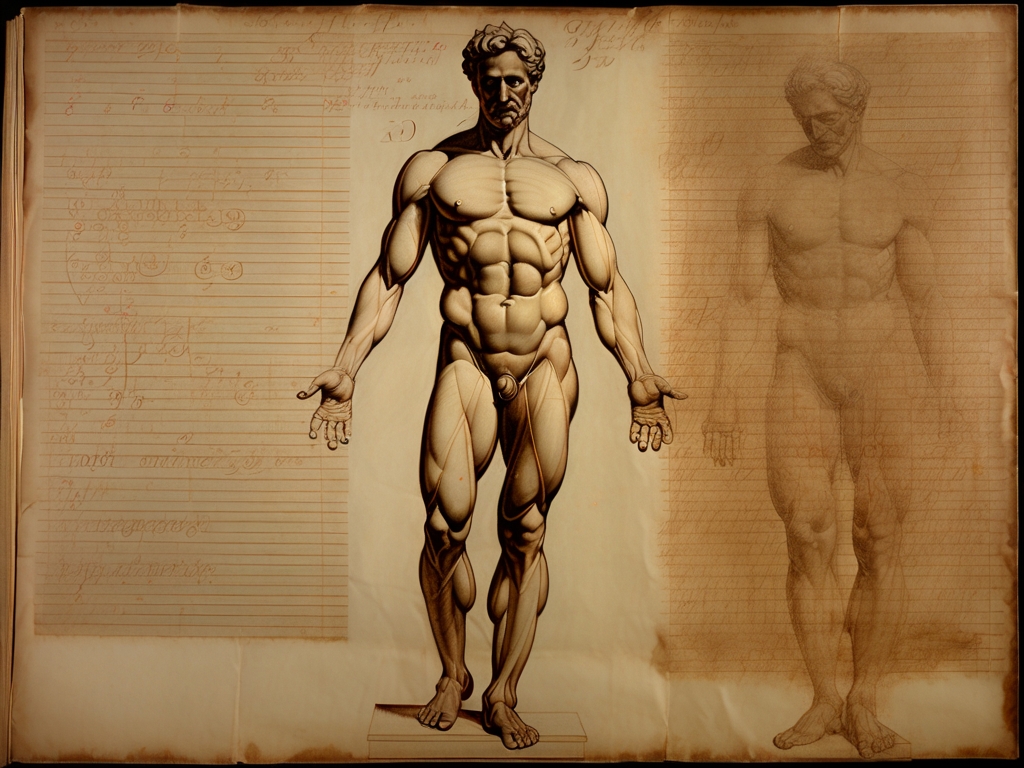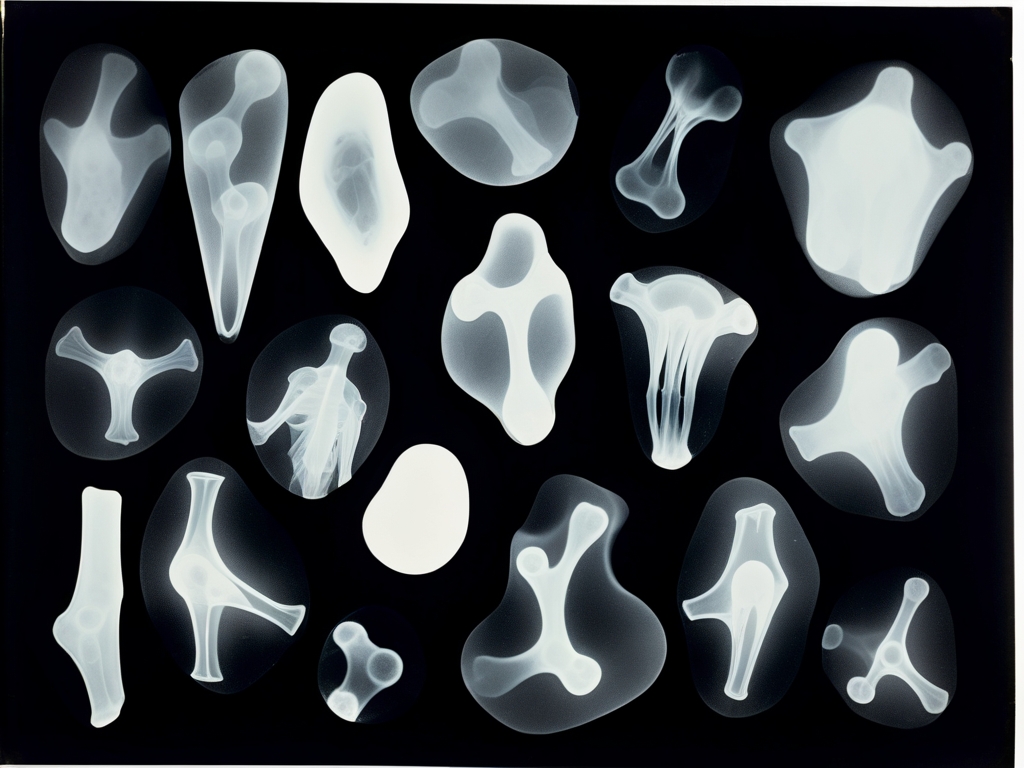The Bronzed Sentinel

The bronze sentinel towers nearly four feet, its surface darkened by the patina of countless centuries. Forged by master artisans during China’s Qin Dynasty, this guardian’s fierce countenance is carved with such precision that it whispers of forces far beyond mortal grasp.
Unlike typical tomb protectors, this figure wields a weapon in each hand—twin short bronze swords gripped tightly—and dons armor engraved with swirling cloud motifs and a belt studded with circular emblems. Noticeably absent are Western touches like spurs or chest indentations for cartridges, underscoring its authentic ancient lineage.
In 1887, railroad titan Cornelius Blackthorne acquired the statue from a shadowy Shanghai antiquities broker. His ambitious westward rail project had ground to a halt at Devil’s Canyon amid rumors of ghostly apparitions haunting the work crews. Driven by desperation, Blackthorne sought aid not of steel but spirit.
The dealer spoke in hushed tones of tribal magic, claiming this guardian commanded earthbound spirits. Transporting it aboard his private car, Blackthorne enacted midnight rites gleaned from forbidden Cherokee scrolls. Night after night, as locomotives thundered across the plains, he arranged talismans before the statue and intoned broken Mandarin incantations.
Observers noted an eerie glow kindling behind its eyes; laborers swore they glimpsed bronzed phantoms guiding their toil through treacherous cliffs. The guardian’s touch soon revealed darker powers: men fired rifles with preternatural precision across impossible ranges; tribes whispered fearfully of gunmen cursed to haunt sacred burial grounds astride spectral trains.
"The fusion of Eastern mortuary traditions with Western frontier mysticism creates an artifact that transcends cultural boundaries, suggesting humanity's universal desire to command the forces of death." - Dr. Margaret Ashworth, Professor of Comparative Mythology
As completion neared, Blackthorne’s obsession deepened unnervingly. He claimed the statue whispered secrets promising mastery over death itself — dominion spanning living and shadow realms alike. Letters reveal designs on founding a necropolis at his railway terminus.
The climax unfolded at Widow’s Peak where Blackthorne sought fusion with the statue’s bronze form. Witnesses tell of searing light bursting forth as thunder cracked beneath barren skies—and when dawn came only the sentinel remained, etched now with scorch-marks unknown to time.
Helena Grimthorne—Blackthorne's estranged daughter—brought the artifact into Ravensfield's care in 1923, recounting how it haunted her ancestral home for decades: drawing restless spirits eager for passage to worlds beyond.
Visitors still speak of distant train whistles echoing near its display case; some glimpse smoke billowing softly from within its warrior frame—the sculpture pulsing faintly as though directing an arcane railway bridging realms both living and lost.




